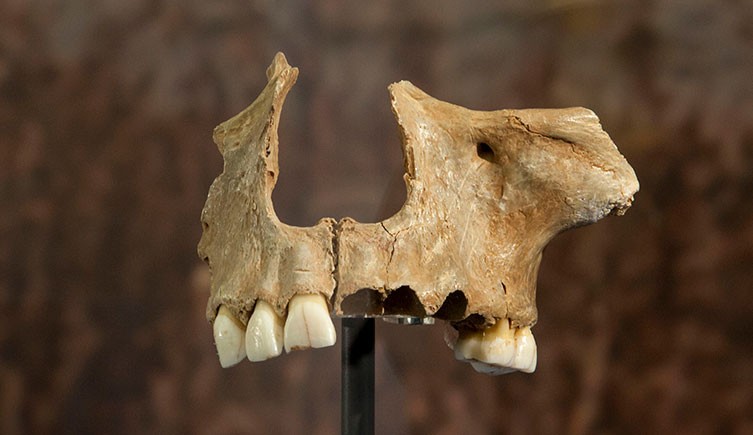In recent years, hiking enthusiasts around the world have begun to report a fascinating phenomenon: the discovery of peculiar-looking stones during their treks through remote forests, desert canyons, high mountain passes, and secluded riverbanks. These stones—often smooth, oddly-shaped, sometimes marked with strange patterns—have ignited curiosity, confusion, and even controversy among amateur geologists, archaeologists, and adventurers.
Are these stones simply unusual geological formations, sculpted over millennia by natural forces? Or do they hint at something more—perhaps traces of ancient human activity, remnants of long-lost civilizations, or relics of unexplained phenomena?
Let’s dig into the strange world of peculiar stones found by hikers—and what they might be.
The Phenomenon: Strange Finds in Unexpected Places
Social media has amplified the buzz around unusual stone finds. From Reddit threads to Facebook hiking groups and Instagram stories, more and more outdoor explorers share photos and videos of what appear to be geometrically precise, oddly symmetrical, or mysteriously marked stones.
Some of the standard features of these peculiar stones include:
Perfectly spherical or oval shapes with an unnatural level of symmetry.
Unusual surface textures include carved grooves, spiral lines, or honeycomb indentations.
Strange coloration, such as metallic sheens or luminescent glows under UV light.
Embedded crystals or metal fragments that seem out of place for the surrounding geology.
Clustered groupings of similar stones in isolated areas, suggesting intentional placement.
For hikers, stumbling upon these stones is a moment of awe—and often confusion. Many report feeling a deep sense of wonder, as if they had just uncovered a forgotten secret of the earth.
Natural Wonders: Geological Explanations
Before diving into theories of ancient artifacts or alien relics, it’s essential to understand how geology alone can explain many of these anomalies.
1. Concretions and Geodes
One of the most common explanations for spherical stones or stones with crystal interiors is concretion—a natural process where minerals accumulate around a core, often forming perfectly rounded stones. These are commonly found in areas with sedimentary rock layers.
On the other hand, geodes are hollow rocks lined with crystals, formed when mineral-rich water seeps into cavities and slowly deposits layers over time. When cracked open, they reveal brilliant quartz, amethyst, or calcite interiors—often startlingly beautiful and symmetrical.
2. Erosion and Weathering
Wind, water, and ice can sculpt rocks into seemingly impossible shapes over thousands of years. Wind erosion in deserts can create smooth, polished stones with natural grooves and ridges. Water erosion in riverbeds and coastal regions often rounds out rocks and even drills holes through them, making “holed stones” that resemble tools or ornaments.
3. Volcanic Activity and Impact Events
Volcanic regions often produce unique stones, such as pumice, obsidian, or lava bombs, with odd shapes and textures. Similarly, meteorite impacts can form tektites—glassy rocks shaped by a cosmic collision’s intense heat and pressure. These can appear melted, pitted, and alien in appearance.
While these natural explanations cover many peculiar stone finds, not all can be easily dismissed.
Signs of Human Craft: Artifacts or Coincidence?
In some cases, stones discovered by hikers bear markings or modifications that suggest deliberate human action—sparking speculation among amateur archaeologists and history buffs.
1. Petroglyph Stones
Some stones are found with carvings, symbols, or etchings that appear intentional. While many of these are attributed to ancient indigenous cultures, especially in the Americas, Africa, and Australia, others remain unidentified or lack cultural context.
In remote regions where no known civilizations are believed to have settled, these marked stones challenge our assumptions about who lived where—and when.
2. Tool-Like Stones
The untrained eye can misidentify stone tools such as arrowheads, scrapers, and hand axes as peculiar stones—but the reverse is also true. Some hikers have stumbled upon carefully worked flints or polished stones that defy easy classification, mainly if they were found far from known archaeological sites.
These objects’ shape, balance, and wear patterns suggest purposeful shaping, although erosion can sometimes mimic such effects.
Ancient Structures or Stone Alignments?
In some places, hikers have discovered groups of stones arranged in geometric patterns, such as circles, spirals, or alignments with the sunrise. While these could be natural formations or the result of modern visitors arranging stones for fun or ceremony, others seem far older and more deliberate.
A well-known example is the Bighorn Medicine Wheel in Wyoming—an ancient Native American stone structure aligned with astronomical events. Less-known stone circles and alignments throughout North America, the UK, and parts of Africa predate written history.
Could some of the peculiar stones found by hikers be remnants of these ancient ceremonial or observational sites?
Folklore and Superstition: Stones with Stories
Throughout history, people have ascribed mystical or symbolic meaning to strange stones. In many cultures, peculiar-looking rocks were seen as gifts from the gods, talismans, or energy vessels.
Some recurring themes in folklore:
“Fairy stones” or “elf shot”—small carved stones said to be used by supernatural beings.
“Wishing stones”—stones with natural holes, often believed to grant wishes or protect against evil.
“Thunderstones”—supposed weapons cast down from the heavens, often linked to ancient stone axes or fossils.
In some hiking accounts, individuals claim to feel odd sensations when handling peculiar stones—such as tingling, temperature changes, or a sense of unease. While science attributes this to suggestibility, folklore has long viewed such stones as powerful or enchanted.
The Alien Hypothesis: Out-of-Place Artifacts?
Though far from mainstream science, a fringe theory that continues to surface in discussions about peculiar stones is the ancient alien hypothesis. Some believe that strange stone artifacts—especially those with metallic inclusions, perfect symmetry, or unknown inscriptions—could be remnants of extraterrestrial contact.
Notable examples often cited include:
The Dropa Stones of China are circular discs with spiral grooves and strange symbols, supposedly found in a remote cave.
The Wolfsegg Iron in Austria, a lump of iron with unknown origins found inside a block of coal—considered by some to be a manmade object from the distant past.
While no hiker has yet stumbled upon a confirmed alien relic, the unexplained nature of some stone finds keeps the door open for speculation.
The Role of Citizen Science and Responsible Reporting
With more people hiking and exploring the wilderness than ever before, it’s essential to highlight the role of citizen scientists in advancing our understanding of the natural world.
If a hiker encounters a peculiar stone, experts recommend:
Document the find: Take high-resolution photos from multiple angles. Include measurements and location coordinates.
Do not remove the stone: Especially in protected areas, removing artifacts may violate laws or disturb ongoing research.
Report the discovery: Contact local geological or archaeological institutions for evaluation. Sometimes what seems mundane is significant—or vice versa.
In this way, hikers become part of a broader effort to explore, preserve, and understand the mysteries of our planet.
Conclusion: Beauty, Mystery, and Wonder in the Wilderness
The discovery of peculiar-looking stones is more than just a curious moment on a hiking trail—it’s a reminder of the deep time and mystery etched into the landscape. Whether shaped by wind and water, ancient hands, or unknown forces, these stones captivate us because they challenge what we think we know.
They urge us to look closer, ask questions, and stay curious—qualities that have always driven human exploration. And as long as hikers continue to venture off the beaten path, the earth will continue to whisper its secrets in stone.




